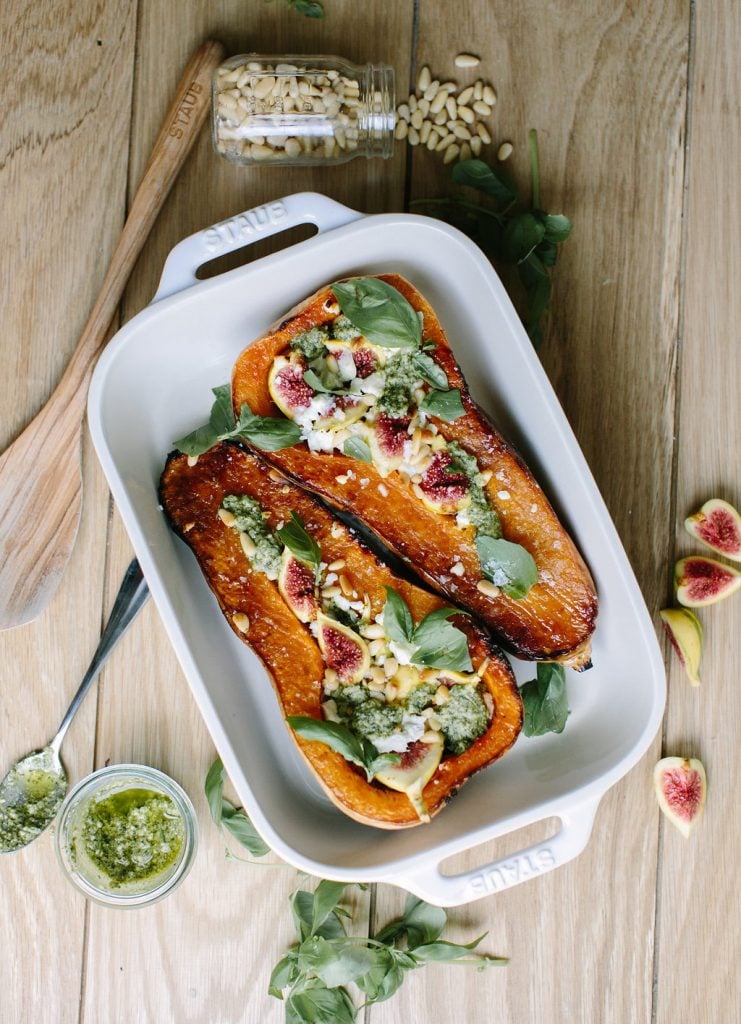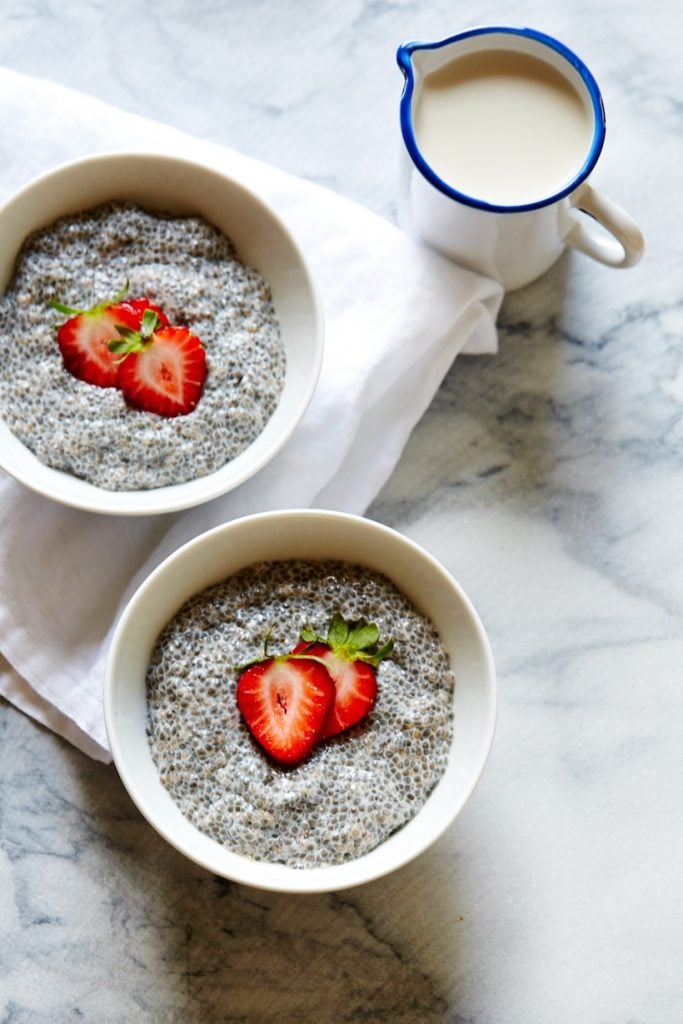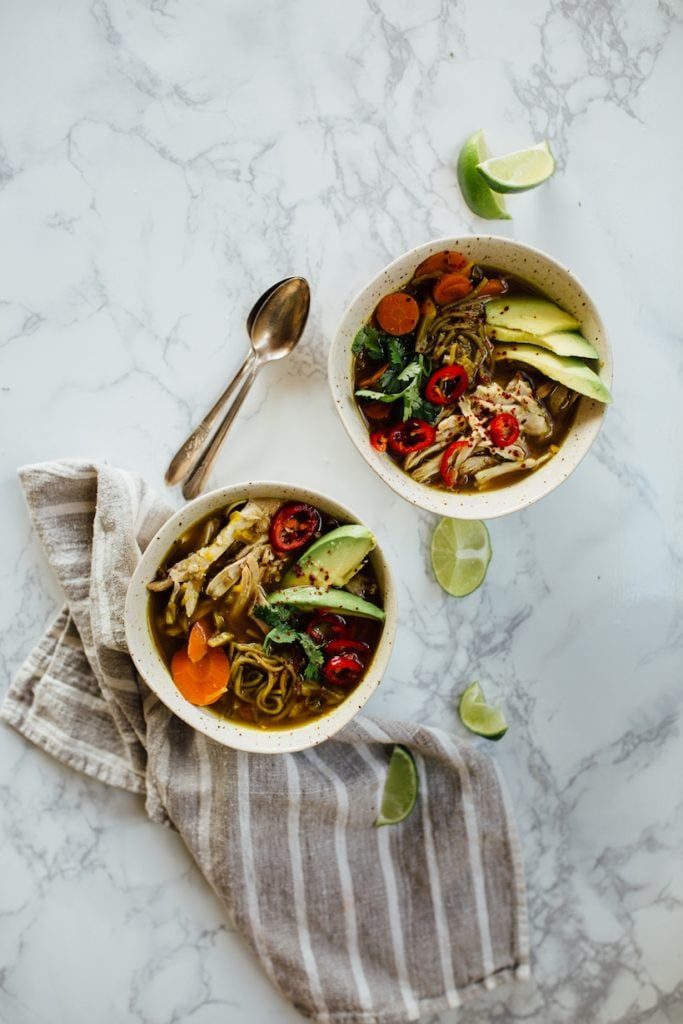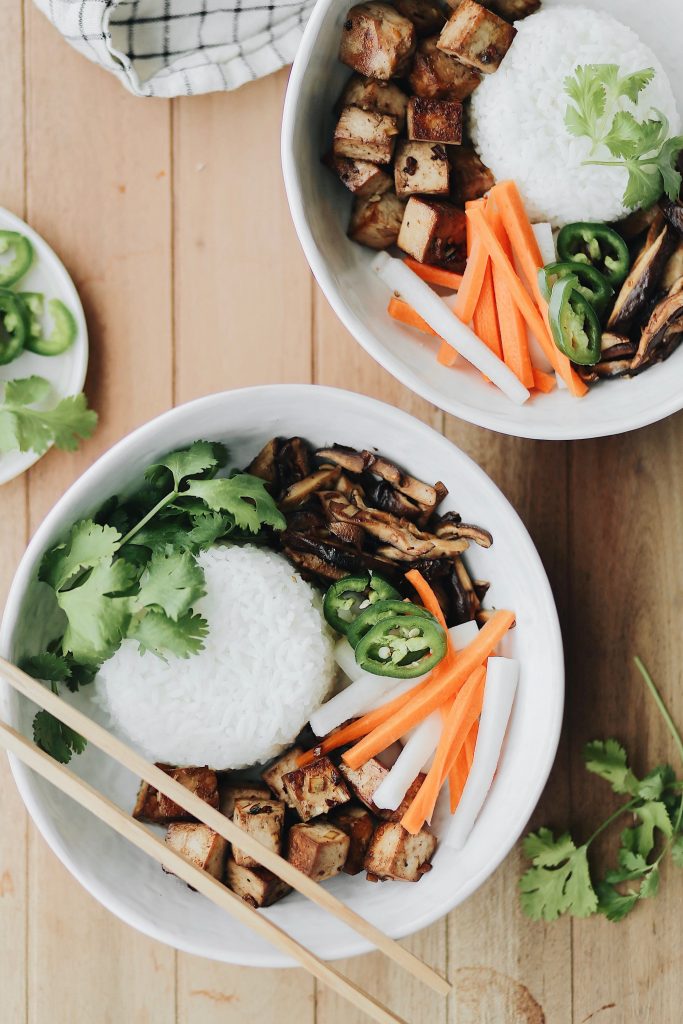In the final few months of pregnancy, life is a blur. Sleep is hard to come by, nesting is at an all-time high, and discomfort grows daily. Been there, experienced that. And while I’m grateful for an uncomplicated, beautiful pregnancy and a healthy baby, I was hardly prepared for the fourth trimester. Like other moms who birthed their babies in 2020, postpartum was rocked by the pandemic. The village we so desperately needed wasn’t within arm’s reach. Through my personal—yet universal—experience, I needed more support, nutrition advice, and mental counseling. And so, I took matters into my own hands. I became certified with a speciality in postpartum health. Armed with my credentials, I’m sharing 10 postpartum essentials. These are holistic tips, resources, and products to support recovery.
Feature image by Michelle Nash.

What People Don’t Tell You About Postpartum Depression
The postpartum time period is arguably the most coveted, tender, and emotional season in a woman’s life. Some women feel an immediate identity shift, and others feel lost, sad, and completely bewildered. There is no gold standard for how you should feel after giving birth. What is important, however, is that you acknowledge how you’re feeling. Seek the support you need. There is no shame or guilt for experiencing various postpartum conditions (baby blues, postpartum depression, etc.). Research shows there isn’t one specific reason that causes postpartum depression, but some women are more vulnerable to PPD than others. While well-meaning family and friends can help you manage daily activities, they’re not capable of providing the knowledge and care you need.
If you believe you’re experiencing PPD, speak with your healthcare provider. Receiving an appropriate diagnosis and treatment is necessary to improve symptoms and protect the well-being of yourself and your baby. Therapies and medications are available.


Traditional Postpartum Practices
For thousands of years, different cultures have deeply valued the importance of transitioning from prenatal to postpartum. It’s an ordinary yet extraordinary milestone. In doing so, these cultures have implemented—and honored—an extended period of healing and adjusting. Female relatives (and sometimes females from the community) nourish a new mother with ceremonial foods, tend to her needs, and relieve her of all responsibilities. Her only focus is to rest and recover, restore her vitality, replenish her reserves, and care for her newborn baby.
This time allows baby to transition slowly to life, earth-side. It also provides space for an expecting woman to become a mother, serving to create a solid foundation for motherhood. Respecting this was—and is—considered necessary for mother, baby, and all of society at large.


Postpartum Healing
If you’ve recently returned home from the hospital, I hope you’re taking the time to cherish the hard, tender, and beautiful early weeks as new mom. Lean on your loved ones and don’t hesitate to ask for help—particularly if you delivered via C-section. You just had major, major surgery. Not only is your body recovering from pregnancy, and possibly a long labor, but there’s also an incision through the tissues of your abdomen. There’s likely an emotional dimension to work through, too. Know that you’re not alone in this.
1. Rest, Rest, Rest
When it comes to postpartum essentials, rest is top priority. Once in recovery, you need a lot of rest. While this may seem impossible with a newborn baby, you need to prioritize healing your body. It takes about 6-8 weeks to recover from birth (possibly longer with a C-section), but each woman’s timeline will be different. During this time, it’s recommended that you avoid lifting anything heavier than your baby. Rather than an I-must-do-it-all mentality, don’t overexert yourself. You need to heal. Not prioritizing rest can quickly sabotage your recovery—as can a ‘bounce back‘ attitude.


2. Sitz Baths
Sitz baths encourage circulation, which can help reduce swelling and speed up healing after birth. They can help new mothers relax as well as soothe postpartum discomfort, from tearing and an episiotomy, to stitches, perineal bruising, bleeding, and hemorrhoids.
HOW TO USE A SITZ BATH
Steep herbs using approximately 2+ tablespoons per sitz bath (large batches can be made, heating the herbal mixture before each bath). Strain out the herbs before using the mixture. Soak in warm water for up to 20 minutes, 2-3 times a day. A dedicated sitz bath fits over the top of the toilet and can be purchased from a medical supply store or pharmacy. A bathtub can also be used. Fill the tub with three inches of water—just ensure the tub is very clean to reduce the risk of infection!
HERBAL SITZ BATH
These herbs are known for their healing properties and ability to soothe. Any combination can be used: Calendula, lavender, red raspberry leaf, yarrow, comfrey. Oatmeal can also be used to ease any itching experienced when recovering from stitches. (Psst… use code EDIE10 at checkout for 10% off my favorite all-natural bath soak!)
EPSOM SALT SITZ BATH
As an alternative to herbs, Epsom salt can help reduce swelling and encourage healing. If using a sitz bath, add enough warm water so that you can soak the area without overflowing the basin. Add two cups of Epsom salt to the warm water. If you’re using a sitz bath, aim for a half cup. Lower your anal area into the bath and soak for 10-20 minutes.


3. Witch Hazel
Witch hazel is extremely soothing. It can reduce inflammation with its astringent properties. It’s an antiseptic and helps fight bacteria to reduce the risk of infection. It’s key for postpartum essentials. Witch hazel can also help stop minor bleeding and provide relief for hemorrhoids.
HOW TO USE WITCH HAZEL
Soak circular cotton pads in witch hazel or apply directly using a small spray bottle. Witch hazel can also be used in a peri bottle or padsicle (described below). A peri bottle is a must for vaginal births. It’s filled with warm water (and optionally, witch hazel) and is used to rinse after urinating, as using toilet paper can be very irritating in the early days—especially if there are stitches. It can also be used to cleanse and rinse wounds.
4. Padsicles
Padsicles are postpartum maturity pads that have been saturated with a healing solution. They’re well-known as postpartum essentials. They provide pain relief, reduce inflammation, and soothe swollen tissue. Padsicles can also ease discomfort from hemorrhoids.
COMPONENTS OF A POSTPARTUM PADSICLE
- Postpartum maxi pads (natural, chlorine-free, unscented)
- Witch hazel (alcohol-free)
- Aloe gel (free of artificial dyes and preservatives)
- Healing herbs, any of the herbs used in a sitz bath
- Lavender essential oil
- Spray bottle
- Large freezer baggie
HOW TO MAKE A POSTPARTUM PADSICLE
Solution: Four parts witch hazel + one part aloe vera gel + a few drops of lavender essential oil. Open the pad without removing the protective wrapping that the pads come in. Use the spray bottle to spray a thin, even layer of solution on the pad. The pad should be saturated, but not soaked.
If adding herbs: Steep the herbs in filtered hot water for 15-30 minutes. Strain the herbs out and let cool before pouring into a spray bottle, then spray an additional thin, even layer on the pads. Fold the pads back up tightly in their protective wrapping. Place them in a freezer bag (several pads can go in the same large bag) and store in the freezer.
How to use: Change the padsicle every four hours, or as often as needed. It may need to be changed more often. Use up to four padsicles per day.
If the padsicle is a bit too cold when taken out of the freezer, let it sit on the counter for a few minutes to soften a bit.


5. Breastfeeding Pillow
If you have stitches (or if sitting causes perineal discomfort), a breastfeeding pillow is great. When using a breastfeeding pillow, be sure to use an absorbent bed pad. This will prevent staining if leaking occurs.
6. Warm, Soft, and Easily Digestible Ingredients
Deeply nourishing food is one of the most important postpartum essentials. Nutrient-dense foods promote healing after birth, necessary energy, support the production of breast milk, and help rebalance hormones. I have a lengthy article on postpartum nutrition, but here’s the gist: You want to focus on foods that are warm, soft, and easily digestible.
Most traditional cultures advise new mothers to eat slowly, put a heavy emphasis on nutrient-dense bone broths and healing herbs, and strictly prohibit cold foods. And don’t forget to keep taking your prenatal! Here’s a simple guide for putting together well-balanced meals:
- A source of protein—animal or plant-based
- Healthy fats—ghee, olive oil, coconut oil, avocado, nut butter, etc.
- Starchy carbs—berries, rice, squash, sweet potatoes, etc.
- Non-starchy carbs—greens, mushrooms, cabbage, tomatoes, etc.


7. Healing Foods
When it comes to postpartum essentials, don’t neglect healing foods.
Fermented foods: Aid digestion, nourish breast milk, and help rebuild microbiome for those who were administered antibiotics during labor.
Bone broth: Slow-simmered bone broth plays a key role in the postpartum practices of many traditional cultures. Not only is bone broth nutrient-dense and a rich source of collagen, it also aligns with the traditional practice of serving new mothers warm beverages and soups rather than cold food. My go-to bone broth is Kettle & Fire. It’s extremely nutrient-dense, high-quality, and tastes delicious.
Nut butter: It’s common for new mothers to experience highs and lows due to hormonal fluctuations and fatigue. Monounsaturated fats—the majority of fat found in nuts—help combat this by steadying blood sugar. A quick spoonful of nut butter can be a savior in the early postpartum days. I love Santa Cruz Organic peanut butter and Costco’s organic almond butter.
Sardines: Sardines are a rich source of many important nutrients that new mothers require, such as DHA, calcium, and vitamin D3. They are also available canned, which makes them a quick and easy addition to a meal.
Coconut: Nourishes breast milk and helps balance blood sugar.
Winter squash and root veggies: These comfort foods are easy to roast and they keep well in the fridge. Pair them with a healthy fat to help keep blood sugar stable and increase the absorption of nutrients like beta-carotene.
Chia seeds: High in fiber to aid digestion, protein to balance energy, and a good source of calcium, which is especially important for breastfeeding mothers. Chia seed pudding is fast to make for busy moms.
Grass-fed liver: Rich in iron to replete losses from birth. Rich in vitamin A to support the immune system and promote repair of the mucous membranes in the vaginal canal or skin healing of an incision.


8. Warming Spices
Take your postpartum healing the extra mile with warming spices. Turmeric is incredibly supportive for the early postpartum period. Known as a uterotonic, this herb gently stimulates the uterus, which helps it return to its pre-pregnancy size. Plus, it’s loaded with anti-inflammatory properties to aid in recovery after birth.
Ginger is another powerful spice. Organs shift during pregnancy to make room for baby, which can lead to digestive complications after birth as the body adjusts back. It’s also a lactogenic herb that supports milk supply. Last but not least, cinnamon and cardamom. These help warm the body. Ancient eastern and Ayurvedic wisdom place a particular emphasis on warming foods and spices in the postpartum period to increase circulation, improve digestion, and restore energy.


9. Hydrate
No surprise here. First and foremost, proper hydration is necessary for breast milk production. Plus, drinking water can help you replenish the fluids that you lost during delivery. But it can also help relieve constipation. Aim to drink 8-10 cups of water per day. You can leave bottles and Mason jars filled with electrolyte water around the house. You can also sip on homemade fruit and vegetable smoothies (ideally consumed at room temperature).


10. Build Blood
Our bodies make almost a gallon of blood in pregnancy—a function of which is to provide a buffer against blood loss. But, in a cesarean birth, we tend to lose more blood than average, which means that our bodies have to build it back up. If someone was already borderline anemic, this blood loss could feel significant. We need adequate blood to make milk. Interestingly, low iron can be one of the reasons why there is a delay in milk coming in! When iron is low, we also generally feel unwell. Eat iron-rich foods (and try to limit iron-fortified foods, as the iron is synthetic and often difficult to digest). As far as supplements are concerned, this is my favorite iron supplement.
Disclaimer: This article is for informational purposes only. It is not, nor is it intended to be, a substitute for professional medical advice, diagnosis, or treatment. We recommend that you always consult your healthcare provider.





